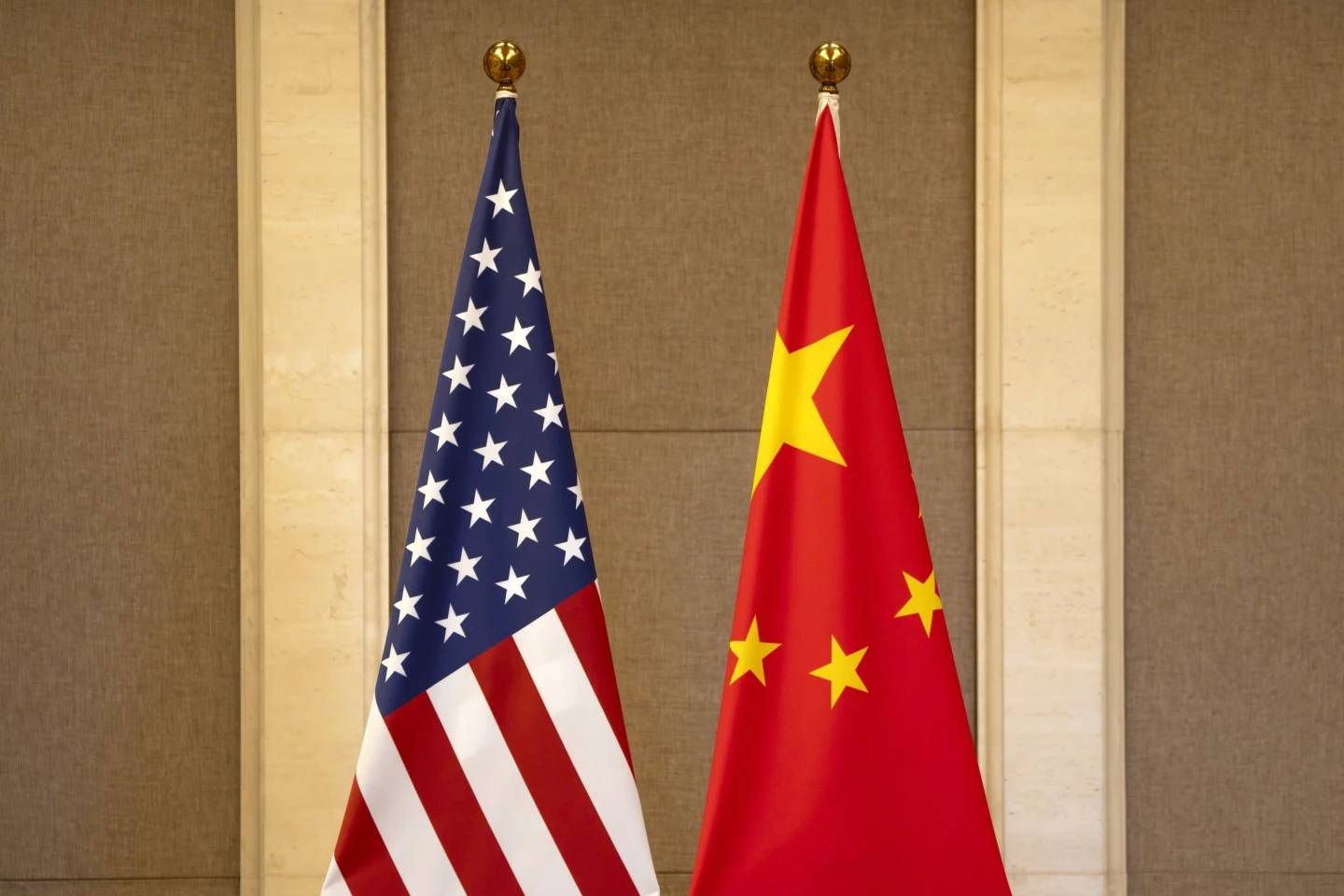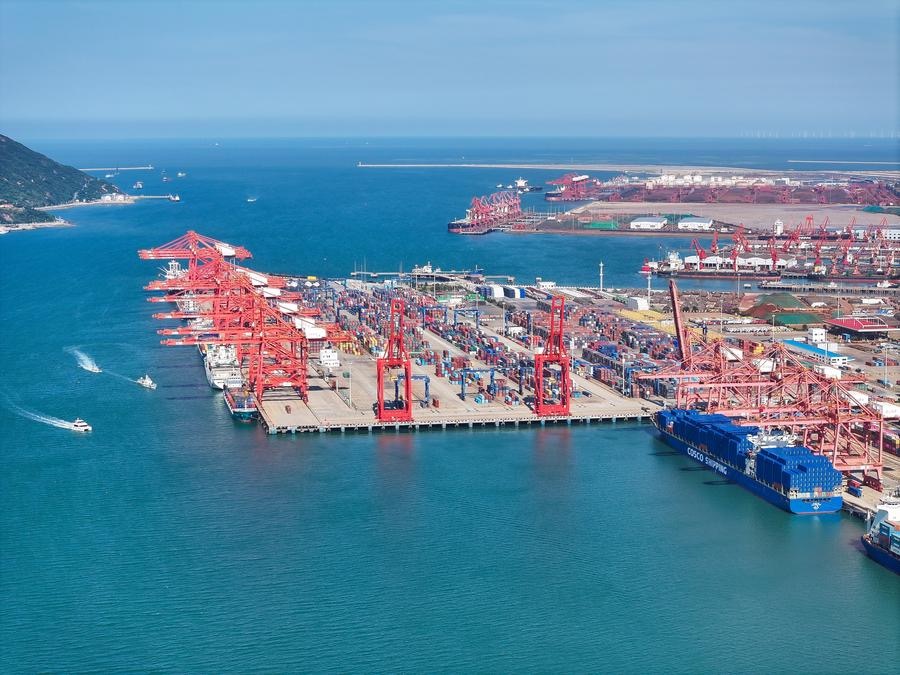Home > > Why the recalibration of U.S. and China partnership matters
Why the recalibration of U.S. and China partnership matters

File photo of national flags of the United States and China. /AP
In a world burdened by geopolitical tensions, economic fragility and urgent transnational challenges from climate change to artificial intelligence (AI), few relationships carry as much weight, promise and peril as that between the United States and China. While strategic competition has dominated headlines in recent years, recent events, such as the phone conversation between Chinese President Xi Jinping and U.S. President Donald Trump, and the Senior-Level Track Two Dialogue in Beijing signal not just a thaw, but act as a reminder that this is a relationship too critical in the scheme of things to abandon.
As Xi aptly stated during his phone call with Trump, recalibrating the course of China-U.S. relations is akin to steering a giant ship. It requires strong hands at the helm, a clear vision and the maturity to look past distractions. The metaphor is apt. This relationship has weathered storms before, but it has also charted passages of immense benefit not just for both countries, but for the world at large.
It is easy to neglect, amid trade spats and diplomatic mistrust, that there were eras when the U.S. and China worked in sync to usher in historic changes. The normalization of relations in the 1970s helped reshape the global order. Later, China's accession to the World Trade Organization in 2001, championed in part by American policymakers, paved the way for China's economic rise, while simultaneously unlocking new markets for American businesses.
Bilateral cooperation on global challenges has also shown the potential of this relationship. During Barrack Obama and Xi years, joint efforts on climate agreements, counter-piracy, and even health security, especially during the Ebola epidemic, demonstrated what synergy could achieve. These were not acts of convenience but acts of strategic necessity and mutual benefit.
The Senior-Level Track Two Dialogue, which brought together senior-level thought leaders and officials in Beijing, offers a hopeful blueprint. Chinese Vice President Han Zheng's words that peaceful coexistence and mutual respect benefit not just the U.S. and China but global peace reflect China's consistent message that the door to cooperation remains open.
China's approach balances sincerity with principle. It seeks equality, mutual benefit and respect for core concerns such as the Taiwan question. This assertiveness should not be mistaken for intransigence. Rather, it reflects the same self-interest that any great power must assert.
What is notable is that, even while outlining its red lines, China continues to extend invitations for dialogue, trade and educational exchange as highlighted by Xi's warm reception of U.S. students and his invitation for Trump to visit again.
China and the U.S. will not agree on everything; nor should they. The fundamental difference in political systems, values and strategic worldviews means friction is inevitable. But disagreement does not mandate hostility.
The two presidents' mutual commitment to the Geneva agreement and their recognition of the progress already made reveals a pragmatic path forward. As Xi noted, dialogue and cooperation is the only right choice. Trump, for his part, acknowledged the importance of a thriving Chinese economy and the vast potential of U.S.-China collaboration. That both leaders voiced these sentiments in 2025 amid a fraught global context underscores how indispensably interlinked they are.

Freight ships docked at the container terminal of Lianyungang Port, east China's Jiangsu Province, June 26, 2024. /Xinhua
The U.S.-China relationship is not a zero-sum game. It is a balancing act that affects everything from global financial markets to regional security in Asia, to climate action, AI governance and global health. When these two giants cooperate, the international system stabilizes. When they do not, smaller countries, particularly in the Global South, are often forced to take sides in ways that undermine sovereignty and development.
Moreover, rekindling U.S.-China cooperation could help restore multilateralism at a time when international institutions are struggling under the weight of nationalism and great-power rivalry. If these two nations, with all their differences can build a framework of managed competition and strategic respect, it would serve as a powerful model for a fragmented world.
Indeed, we should approach a future with clear-eyed optimism. While Washington and Beijing may not always be perfectly aligned, both sides have shown a willingness to engage. Constructive voices remain strong. Diplomacy thrives on the ability to find common ground amid these challenges and keep moving forward toward shared goals.
The recent Xi-Trump exchanges and the dialogues between U.S. and Chinese representatives in Beijing, are not isolated pleasantries. They are signals that suggest while trust may be fragile, the architecture of engagement still stands. The door, as China keeps reiterating, remains open.
Let it not be said that this generation of leaders chooses antagonism over understanding and escalation over dialogue. Essentially, for the sake of global peace, security and development, China and the U.S. must remain steady partners.
(Stephen Ndegwa, a special commentator for CGTN, is the executive director of South-South Dialogues, a Nairobi-based communications development think tank.)
CGTN 2025-06-06
-
Immigration protests intensify in LA as troops deployed
Immigration protests intensify in LA as troops deployed
-
Sino-US talks expected to help build up consensus
Sino-US talks expected to help build up consensus
-
Xi urges US to retract all negative steps
Xi urges US to retract all negative steps
-
Xi: China, Belarus true friends
Xi: China, Belarus true friends